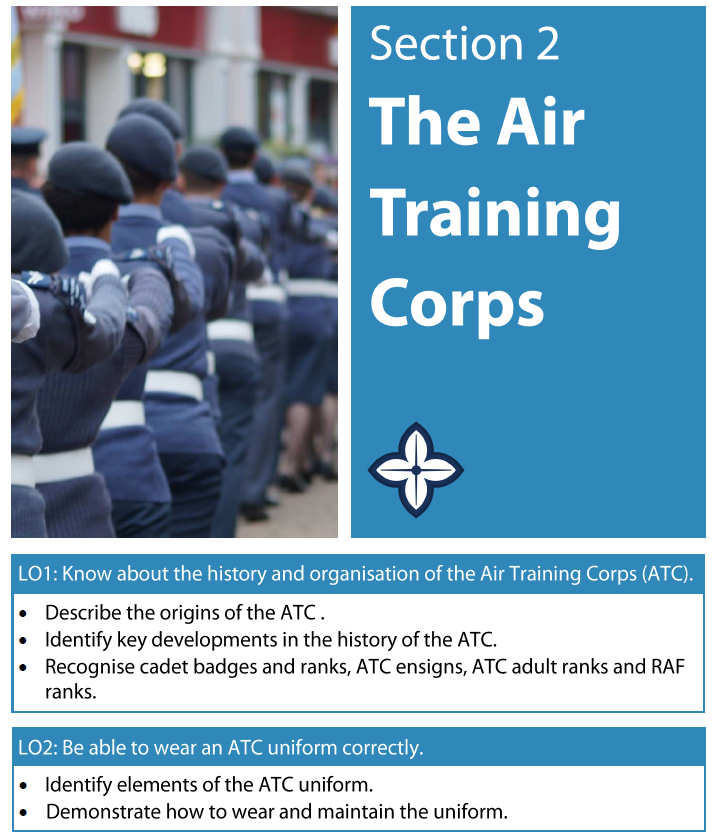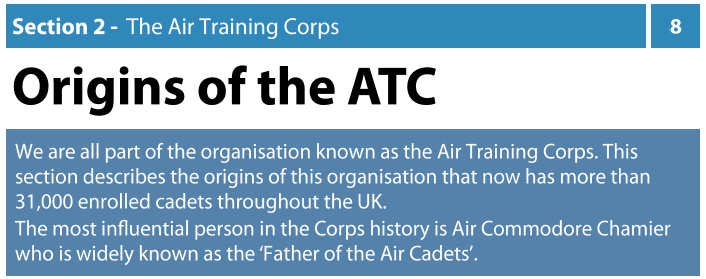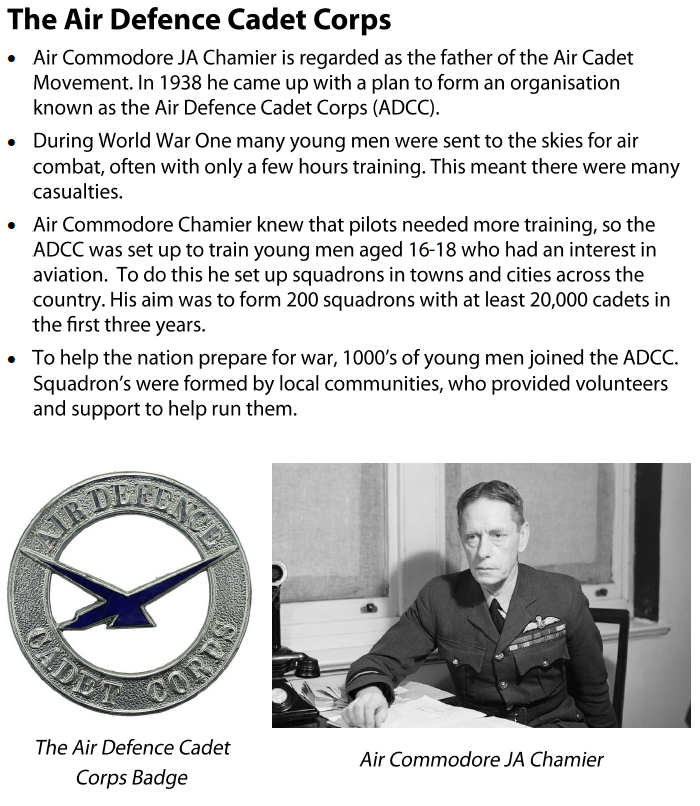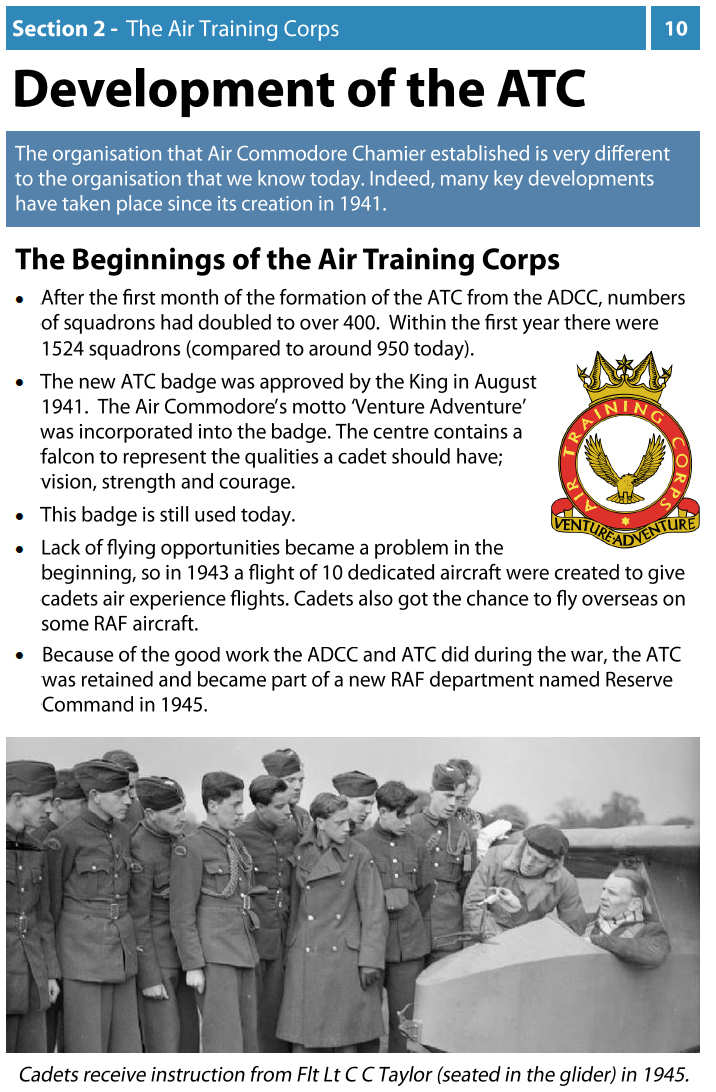About the Air Training Corps ATC

The article below is an extract from the First Class Air Cadet Resource Book.
Please note this information is subject to Copyright 2018 Thomas Grocott. Not for reproduction. Thomas Grocott has asserted his right to be identified as author of this work in accordance with the Copyright, Designs and Patents Act 1988. All rights reserved.Some images in this publication are Crown Copyright and contain public sector information licensed under the Open Government Licence v3.0.


Section 2 The Air Training Corps II
It was initially difficult to get communities to set up squadron's. In an effort to get more squadrons to form, it was announced that the first 50 would be able to put the letter F after their squadron number. At the start of the war the ADCC was asked to train young men who were waiting to be called up into the RAF. This was very successful. Because of the good work the ADCC was doing in training cadets for WWII, the government decided to take over the running of the corps in 1940, which led to the creation of the Air Training Corps on the 5th February 1941. King George the VI was made Air Commodore in Chief for the new organisation.
Summary
• The ATC was founded on the 5th February 1941
• The forerunner of the ATC was the Air Defence Cadet Corps (ADCC)
• Air Commodore Chamier is known as the "Father of the Air Cadets"
In the photo below the 100th recruit for the East Ham Air Training Corps is enrolled by the mayor of the Borough (second from right) shortly before the organisation came into being on 5 February 1941. Also pictured are ADCC cadets waiting to sign up to the ATC.


After World War II
Just after WWII many gliding schools were set up, to give cadets more practical flying opportunities. By 1946, the ATC had 84 gliding schools, spread all over the country. In 1948 the decision was made for cadets to train in two-seater gliders, enabling cadets to be trained whilst flying. The ATC introduced a flying scholarship scheme in May 1949 which gave some cadets the opportunity to complete intensive flying training.
The Duke of Edinburgh Award was trialled in 1956 with seven squadrons. It was so successful that it was rolled out to everyone in 1960.
In 1962, the 21st anniversary of the ATC, the corps was presented with its own banner by its new Air Commodore-in-chief, the Duke of Edinburgh.
On the 3rd May 1974, Air Commodore Chamier died at the age of 91.
More Recent History
In 1980, girls were welcomed into the ATC on a trial basis, with six squadrons being allowed to accept females. They took part in all activities. The trial was successful, and girls were allowed to join all squadrons just two years later.
In 1999, cadets began to fly in the Grob Tutor aircraft for their air experience flying. This aircraft is still used today. The ATC share the aircraft with University Air Squadrons.
In 2016 the Air Cadets celebrated its 75th anniversary. Commemorations included a large concert at RAF Cranwell, a specially commissioned torch which was passed around every ATC wing and a squadron sports challenge. A group of cadets also swam the English Channel. The Duke of Edinburgh attended a service commemorating the 21st anniversary of the ATC.
Summary
• The ATC was absorbed into Reserve Command in 1945, making it an official part of the RAF.
• The Duke of Edinburgh Award Scheme was trialled in 1956 and girls were allowed to join in 1980.
• Air Commodore Chamier died in 1974, aged 91.


